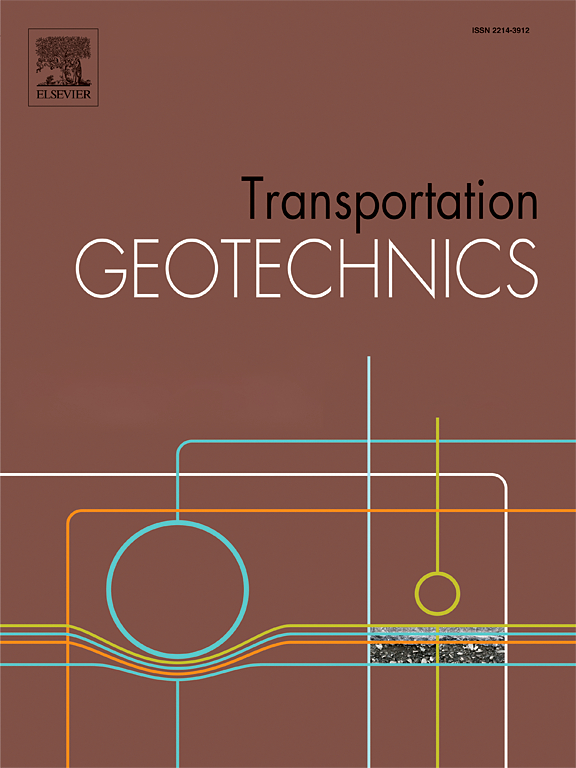Laboratory model test of contact erosion in railway substructure
IF 4.9
2区 工程技术
Q1 ENGINEERING, CIVIL
引用次数: 0
Abstract
The underestimated risk of contact erosion failure in railway substructures poses a significant threat to railway safety, particularly at the interface between the ballast/subballast and subgrade. The larger constriction size at this interface exacerbates the potential for long-term erosion, necessitating attention to safeguard railway integrity. This study introduces a novel laboratory erosion testing apparatus to evaluate contact erosion at the subballast-subgrade interface under cyclic loading. Subgrade soils with varying fines contents are tested, and the effect of pressure head on erosion is investigated in detail. The results indicate that sandy soil with higher internal stability exhibits a higher critical pressure head for contact erosion. Cyclic loading induces oscillations in pore water pressure within the subballast layer, with higher pressure heads leading to larger amplitudes. Excess pore water pressure is generated in the sandy soil layer during cyclic loading and gradually dissipates over time. Fine eroded particles migrate into the subballast layer, forming mud, while coarse eroded particles accumulate at the base, creating low-permeability interlayers. Notably, the geometric conditions alone may not guarantee effective prevention of contact erosion in railway substructures. The hydraulic conditions for contact erosion are more easily achieved under cyclic loading compared to static loading. These distinctive features of contact erosion in railway substructures, different from those observed in hydraulic structures, provide some insights for the development of remediation strategies and improvements in railway substructure design.
求助全文
约1分钟内获得全文
求助全文
来源期刊

Transportation Geotechnics
Social Sciences-Transportation
CiteScore
8.10
自引率
11.30%
发文量
194
审稿时长
51 days
期刊介绍:
Transportation Geotechnics is a journal dedicated to publishing high-quality, theoretical, and applied papers that cover all facets of geotechnics for transportation infrastructure such as roads, highways, railways, underground railways, airfields, and waterways. The journal places a special emphasis on case studies that present original work relevant to the sustainable construction of transportation infrastructure. The scope of topics it addresses includes the geotechnical properties of geomaterials for sustainable and rational design and construction, the behavior of compacted and stabilized geomaterials, the use of geosynthetics and reinforcement in constructed layers and interlayers, ground improvement and slope stability for transportation infrastructures, compaction technology and management, maintenance technology, the impact of climate, embankments for highways and high-speed trains, transition zones, dredging, underwater geotechnics for infrastructure purposes, and the modeling of multi-layered structures and supporting ground under dynamic and repeated loads.
 求助内容:
求助内容: 应助结果提醒方式:
应助结果提醒方式:


